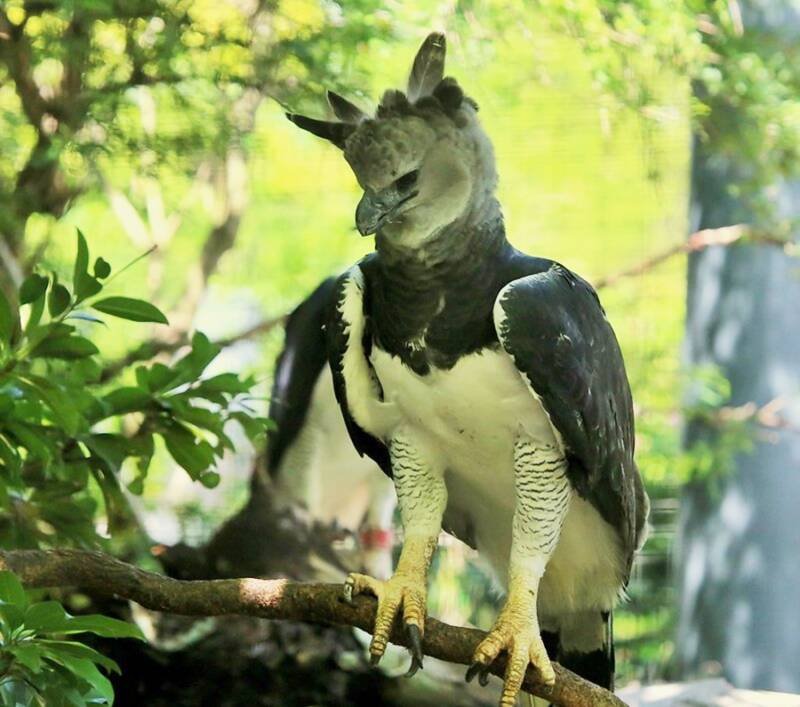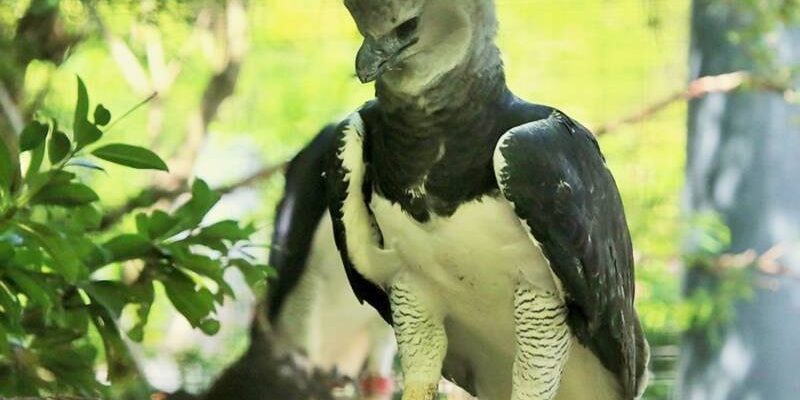
Imagine the harpy eagle as a bridge between the natural world and human creativity—a symbol of strength and wisdom that shapes stories, traditions, and even spiritual beliefs. Just like how ancient civilizations looked to the stars to make sense of their lives, they also turned to this magnificent bird, weaving its image into their narratives, rituals, and art. So, let’s explore the captivating role of the harpy eagle in local cultures and folklore, where its significance goes way beyond just being a feathered predator.
A Symbol of Power and Freedom
In many Indigenous cultures of Central and South America, the harpy eagle embodies power and freedom. Its ability to soar through the skies represents the ultimate form of liberation. For instance, the Maya saw the harpy eagle as a celestial creature, often linking it to the sun god. This connection was not just about flight; it represented a spiritual ascent to a higher state of being, much like how people often dream of rising above their struggles.
In these cultures, the harpy eagle’s impressive size and hunting prowess made it a fitting symbol for warriors. They believed that by embodying the eagle’s strength, they could gain courage in battle. Just picture a fierce warrior getting ready to go into battle, invoking the spirit of the harpy eagle for strength and protection—that’s the kind of imagery that resonates deeply in these local narratives.
Folklore Tales and Legends
You might wonder how a bird inspires countless stories. Well, across various tribal regions, the harpy eagle appears in many folktales that teach important lessons. In some groups, tales are spun about how the eagle protects the forest and its creatures. For instance, Amazonian tribes narrate stories where the harpy eagle rescues animals in danger or punishes those who harm the environment.
These tales often emphasize the balance between nature and humanity. The eagle is depicted as a guardian, reminding people of their responsibilities toward nature. By incorporating this powerful bird into their folklore, communities not only entertain but also instill vital values about conservation and harmony with the earth.
The Harpy Eagle in Art and Cultural Expressions
Art is a vibrant reflection of culture, and you’ll find that the harpy eagle has inspired artists in various forms across Central and South America. From ancient pottery to contemporary sculptures, the harpy eagle’s fierce visage is celebrated. In many indigenous artworks, it’s common to see the eagle portrayed with intricate designs, emphasizing its strength and grace.
Moreover, in dance and rituals, the harpy eagle’s feathers are used to adorn costumes, symbolizing power and connection to the spiritual world. Imagine a colorful dance performance where participants, dressed as the mighty harpy eagle, soar through the rhythm of drums. These artistic expressions keep the essence of the eagle alive, preserving their stories and traditions for future generations.
Spiritual Significance and Rituals
For many Indigenous cultures, the harpy eagle transcends being just a creature of the wild; it holds profound spiritual significance. Rituals often involve invoking the eagle’s spirit to seek guidance or protection. For example, in some Andean communities, rituals include offerings to the eagle, hoping for blessings on ventures such as hunting or farming.
These rituals signify respect and acknowledgment of nature’s power. Participants often partake in ceremonies wearing eagle motifs, signifying their connection to the eagle’s strength and wisdom. These spiritual practices remind us of the interconnectedness of all living beings, fostering a sense of unity and reverence for the natural world.
Conservation Efforts and Cultural Identity
Unfortunately, the harpy eagle faces threats due to habitat loss and illegal hunting. Many communities recognize that protecting the harpy eagle is vital not just for the bird’s survival but also for preserving their cultural identity. Efforts are being made to educate younger generations about the importance of this majestic bird.
Programs often blend traditional knowledge with modern conservation techniques, helping ensure that the stories and significance of the harpy eagle remain alive. You might find community workshops where children learn about the eagle’s role in their culture while also understanding the need to protect its habitat. It’s a beautiful way to bridge the past with the present, ensuring that this iconic bird continues to soar in the skies of the future.
The Harpy Eagle as a Cultural Ambassador
In many ways, the harpy eagle serves as a cultural ambassador. Its image and stories are not just captive to one specific group but are celebrated and shared among various cultures. This cross-pollination of stories exemplifies how interconnected we all are when it comes to respecting and honoring nature.
Local festivals often showcase the harpy eagle as a central theme, bringing together various communities to celebrate their shared heritage. These events promote awareness about the eagle’s plight and encourage collaborative efforts for its conservation. Just think about it: a festival where people from different backgrounds gather to share stories, art, and songs about the harpy eagle. It’s a powerful reminder of how culture evolves while paying homage to the narratives that shaped it.
Final Thoughts on the Harpy Eagle’s Role in Culture
The harpy eagle is far more than just a bird; it’s a rich tapestry of strength, wisdom, and unity that weaves through the fabric of various cultures. From the powerful symbolism it represents to the captivating stories and art it inspires, this eagle has a unique place in local folklore.
As we delve deeper into understanding the role of the harpy eagle, it becomes clear that protecting this magnificent bird is essential for not only its survival but also the preservation of cultural identities that celebrate its legacy. So, the next time you hear a tale about the harpy eagle, remember—it embodies so much more than just the thrill of the hunt. It’s a reminder of our connection to nature, our history, and the responsibility we share in preserving the beauty around us.

